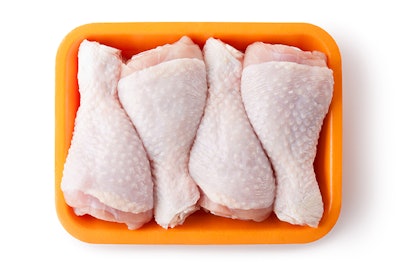
Poultry processors used to consider automation nice to have, but not essential to operations. COVID-19 changed that, highlighting the important role the technology plays in creating a highly efficient and safe workflow.
“Today, it is no longer a nice-to-have, it is a need to have,” Tobias Grasso, president of the Americas, Sealed Air, explained at the International Production & Processing Expo in Atlanta, Georgia, on January 27, 2022.
“Over the last few years, the pandemic has threatened the health of our industry. Many are challenged to keep plants fully staffed and meet escalating demand. It’s time to improve reliability and invest in a smarter future.”
Bringing predictability back to poultry processing
By removing or minimizing the room for human error, automation can help make poultry processing lines more efficient, reliable and predictable. In addition, packaging automation can help processors regain control of the workflow “and prepare for today and tomorrow,” he added.
Many poultry processors struggle with high workforce turnover, which makes labor availability and performance are difficult to predict. Touchless automation can help processors manage labor more effectively. Robots can perform the repetitive tasks of hard-to-fill roles, keeping workers safe and freeing them up for other tasks.
Unlike in the past, automation is now designed for ease of use. Touchscreens can make it simple for users to learn, operate and connect. Workers can monitor the entire processing workflow from one screen, making it easier to identify equipment issues earlier.
Modern automation incorporates a range of technologies. Vision-based systems use hi-resolution cameras to identify and sort products based on dimensions and packaging requirements, enabling smooth product flow down the line. Automatic baggers can reduce labor costs and improve efficiency. Customizable pick-and-play options can handle a wide range of product weights, dimensions, sizes and needs.
“It’s about more than fewer people. It’s about more than machines. It’s about more than speed. It’s about more than just today,” said Grasso.


















